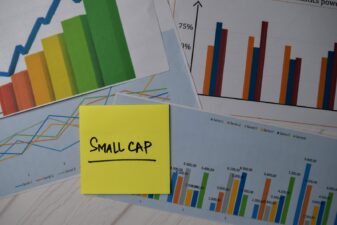If I had no savings at 40, I wouldn’t panic. But I wouldn’t hang around either. I’d still have enough time to build a sizeable pension pot, but I wouldn’t want to waste any more of it.
I’m setting myself a target of £500,000. It’s good to have ambitions and that’s halfway to being a millionaire. It may sound like a daunting sum but at 40, I’d still have 27 years to achieve it, assuming a retirement age of 67.
There’s still time if I try
I’d start by working through my bank statements to identify non-essential spending and divert the money into my pension. So how much would I need to save each month?
Passive income stocks: our picks
Do you like the idea of dividend income?
The prospect of investing in a company just once, then sitting back and watching as it potentially pays a dividend out over and over?
If you’re excited by the thought of regular passive income payments, as well as the potential for significant growth on your initial investment…
Then we think you’ll want to see this report inside Motley Fool Share Advisor — ‘5 Essential Stocks For Passive Income Seekers’.
What’s more, today we’re giving away one of these stock picks, absolutely free!
The UK’s FTSE 100 index has delivered an average total return of 6.89% a year over the last 20 years. Taking that as my baseline figure, if I invested £400 a month, I would just pass my target by accumulating £504,154 by age 67.
This calculation assumes I reinvest all the dividends I receive back into my portfolio to generate more growth, and don’t touch the money at any point. It also assumes I increase my contribution by 3% a year, to maintain its value in the face of inflation.
While £400 a month may sound a lot, as my figures show, it grows into a lot more over a period stretching almost three decades. It’s well worth the effort, as the alternative is to live purely on the State Pension at retirement, and I wouldn’t recommend that to anybody.
Delaying by just a couple of years can be costly. If I didn’t start saving until 42, my £400 a month would only grow to £421,520 over the remaining 25 years, with all my other assumptions unchanged.
Early contributions are most valuable, because they have longest to compound and grow.
I’d get super valuable tax relief
It’s also worth pointing out of my £400 won’t actually cost me £400, because HMRC offers tax relief on contributions. They would only cost a 20% basic rate tax payer £320, while a higher rate 40% taxpayer would pay just £240.
Please note that tax treatment depends on the individual circumstances of each client and may be subject to change in future. The content in this article is provided for information purposes only. It is not intended to be, neither does it constitute, any form of tax advice. Readers are responsible for carrying out their own due diligence and for obtaining professional advice before making any investment decisions.
As ever with investing, there are no guarantees. My portfolio of FTSE 100 shares could rise by less than 6.89% a year, or it could rise by more. It might generate fewer dividends than I hoped (or more!).
Another problem is that inflation will steadily erode the value of £500,000, which won’t have the same spending power when I finally do retire. To counter this, I’d increase my regular contributions by more than 3% a year, if I could afford it. I would also throw lump sums into the market, whenever I had cash to spare.
A newbie investor might prefer to start by spreading their investment risk across the entire index with a FTSE 100 tracker. They could also start buying individual stocks as they get more confident.
I’ve reached the point where I prefer to buy stocks. Right now, Lloyds Banking Group, asset manager M&G, spirits giant Diageo and consumer goods specialist Unilever are right at the top of my shopping list. There’s no time to lose, and I do have savings.








